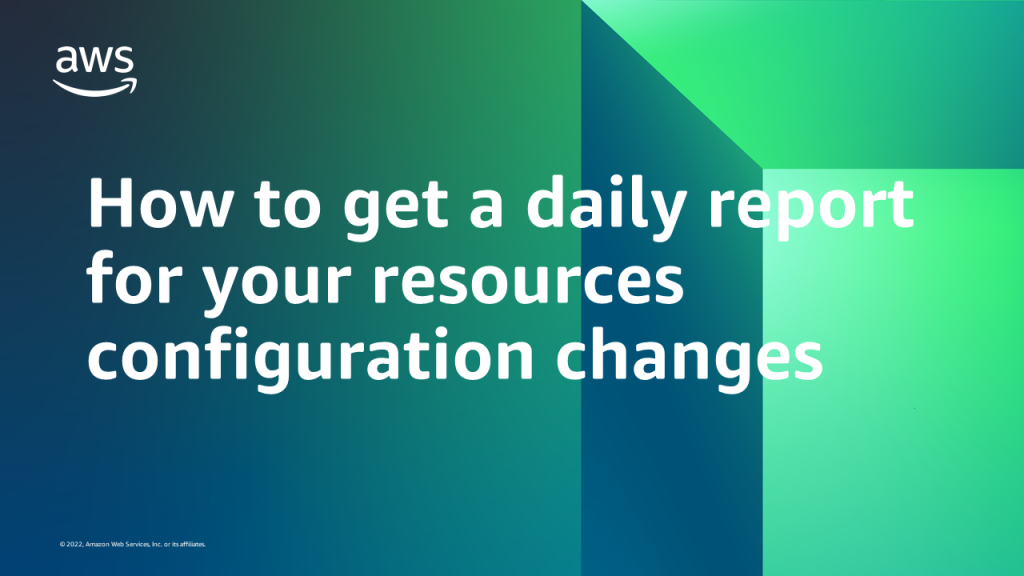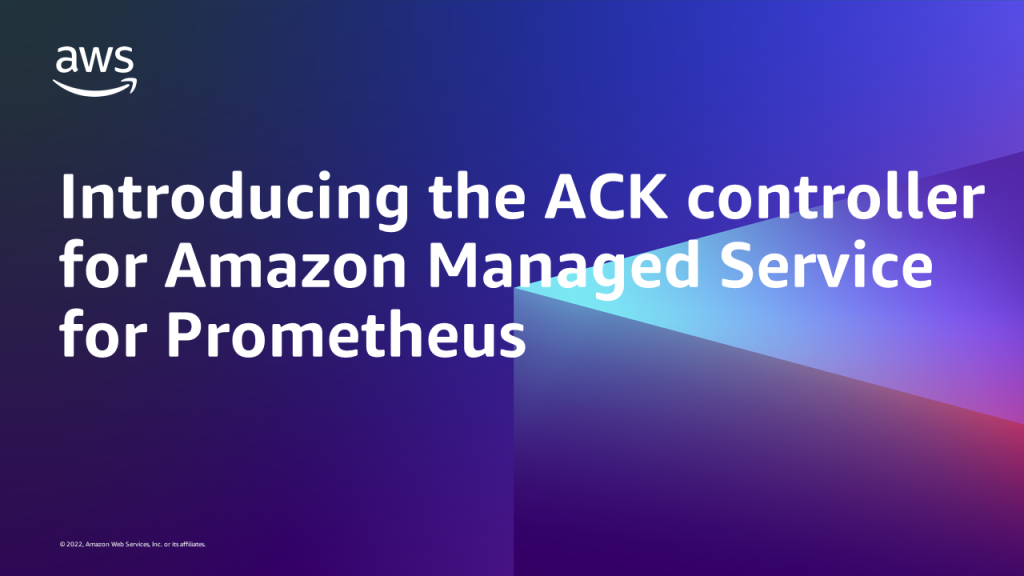AWS Cloud Operations Blog
Category: Advanced (300)
How to get a daily report for your resources configuration changes
AWS allows customers to build, experience, and innovate in their AWS accounts, resulting in dynamic environments. You can manage your resources changes using different controls, such as: Preventive controls with AWS Identity and Access Management (IAM) policies Detective controls with AWS Config Rules Preventive and Detective controls with continuous integration and continuous delivery (CI/CD) pipelines […]
Introducing the ACK controller for Amazon Managed Service for Prometheus
We’re excited to announce that the Amazon Managed Service for Prometheus ACK controller is now generally available for the Workspace, Alert Manager and Ruler resources. The Amazon Managed Service for Prometheus ACK controller lets you take advantage of Prometheus using custom resource definitions (CRDs) and native Kubernetes objects without having to define any resources outside […]
Implementing an alarm to automatically detect drift in AWS CloudFormation stacks
AWS CloudFormation is a service that helps you model and implement your Infrastructure as Code (IaC). It provisions and configures cloud resources as described in template files that are written in JSON or YAML. After resources have been created with CloudFormation, it is possible for users to alter those resources via the AWS Management Console, […]
Migrating AIX workloads to AWS: How to get started
Customers are asking us how to migrate their AIX workloads to Amazon Web Services (AWS). Customers have questions regarding assessing the current AIX portfolio, estimating the total cost of ownership (TCO) on AWS, and guidance in determining migration patterns and target state architectures for specific workloads. To accelerate your AIX migrations to the cloud you’ll […]
AWS Resources Lifecycle Management Via ServiceNow and AWS Service Management Connector
Customers deploy series of AWS resources to support their workloads in the cloud. These organizations, as part of their maturity journey, must help managing the lifecycle of their AWS Resources using existing IT Service Management tool, such as ServiceNow. Manually executing these tasks via both consoles (ServiceNow and AWS Console) is inefficient and time-tasking. With […]
Optimize Log Collection with Amazon CloudWatch Agent Log Filter Expressions
The Amazon CloudWatch agent is a software package that autonomously and continuously runs on your servers. You can install and configure the CloudWatch agent to collect system and application logs from Amazon Elastic Compute Cloud (EC2), on-premises hosts, and containerized applications. The logs collected by the CloudWatch agent are processed and stored in Amazon CloudWatch, […]
How to peer an AWS Migration Hub Refactor Spaces orchestrated AWS Transit Gateway to your existing enterprise AWS Transit Gateway
AWS Migration Hub Refactor Spaces helps customers incrementally refactor applications while shielding end users from the changes of infrastructure and using the strangler fig pattern. This enables customers to refactor their legacy applications into a series of microservices while continuing to operate the existing application in production. Refactor Spaces achieves this by orchestrating a number […]
How to enable bulk self-service provisioning of Amazon WorkSpaces by using AWS Service Management Connector, AWS Service Catalog and ServiceNow Import sets
Amazon WorkSpaces is a fully-managed, secure Desktop-as-a-Service (DaaS) solution that runs on AWS. AWS provides several choices to deploy desktops to users. Some organizations need help integrating this process into their existing automation and Information Technology Service Management (ITSM) tools. Many customers that we talk to want to have a bulk provisioning process, approval process, […]
Best Practices for validating AWS AppConfig Feature Flags and Configuration Data
AWS AppConfig helps you create, manage, and deploy application configuration. One crucial use case for AppConfig is feature flagging, which lets you release features quickly and safely. Using AppConfig Feature Flags, you can separate code from configuration data and hide new features behind a configuration flag. When ready to release that feature, you simply update the […]
Deep Dive on an AWS Migration Hub Refactor Spaces Environment
Refactor Spaces, an Amazon Web Services (AWS) Migration Hub feature, eliminates the undifferentiated work of building and operating AWS infrastructure for incremental application refactoring (typically to microservices using the strangler fig pattern). Building and operating this infrastructure also becomes more complex when making use of multiple AWS accounts (a best practice). While Refactor Spaces saves […]









